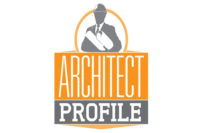Architect Profile: Dan Wells
Each month W&C interviews a new architect to hear their perspective.












Dan Wells, one of A3C—Ann Arbor’s Collaborative Architecture’s Project Managers, recently spent two weeks in Takeo, Cambodia working with Engineering Ministries International to complete the conceptual architectural design of a children’s home that will house 48 children. Engineering Ministries International is an organization mobilizing teams of design professionals that donate their skills to help children and families around the world step out of poverty and into a world of hope.
Since 1982, eMi has worked on over 1,000 relief and development projects in over 90 countries. Last year alone, they worked on 83 projects. On this trip eMi helped Remember Nhu, an organization that exists to prevent the exploitation of children in the sex trade industry throughout the world.
In addition to collaborating with eMi and Remember Nhu, Wells researched Cambodian design and construction techniques to integrate into the final construction drawings which were completed back in the United States. For him, this trip was an opportunity to give his personal and professional time to help vulnerable children by developing design strategies for their future home.
“Architecturally, to design in another part of the world, one must respect local culture, traditions and context,” Wells said. “However, it was not the design or the building that made this trip important, but bringing hope to others, and in this case, to the children of Cambodia.”
The design for this children’s home is complete and the foundations are currently being laid. Hopefully within the next few months 48 children of ages 9 to 20 will be a little safer in their new home.
W&C Architect: How many years do you have in the profession?
Wells: 8 years
W&C Architect: What is your work history in this field?
Wells: I worked during college as a carpenter, completed my internship with a small residential architecture firm and did a small stint with a landscape architecture firm. I finally landed with the position that I currently hold as a Project Manager and Associate at A3C Collaborative Architecture.
W&C Architect: Where did you go to school?
Wells: Lawrence Technological University in Southfield, Michigan.
W&C Architect: Did you have a specialization?
Wells: No, but I always enjoyed the technical/building science side of architecture.
W&C Architect: Do you approach architecture from an artistic or functional starting point? Are the two concepts exclusive?
Wells: Most projects exist to solve a problem. Some projects exist to instill a thought or feeling. My initial approach varies by project; however, true architecture must be infused with both art and function to be successful.
W&C Architect: If any, who are your role models?
Walls: In my personal life it is my parents, grandparents, siblings and wife. In my professional life I have been inspired by Alden B. Dow for his sensitivity to solving design challenges in a simple yet elegant way.
W&C Architect: What projects, other than your own work, do you find inspiring?
Wells: The rehabilitation of the old Ottawa Power Station located in Lansing, Michigan into Accident Fund Insurance Company's new world headquarters.
W&C Architect: How many buildings have you designed?
Wells: I’ve designed 30 buildings.
W&C Architect: If you had to choose one to represent your work, what project would you choose?
Wells: I recently spent two weeks in Takeo, Cambodia working with Engineering Ministries International to complete the design of a children’s home that will house 48 children for Remember Nhu. My wife and I saw this as an opportunity to give of our talents to those more in need. I was part of a team of engineers and architects from all over the world who came together to design the complex. It was wonderful to work with a group so willing to help make a difference. This project exemplifies simplicity while respecting local climate, culture and construction.
W&C Architect: What are your guiding principles when designing a structure?
Wells: My principle goal is to erase the divide between traditional design and sustainable design so that designing in and of itself becomes inherently sustainable. Therefore my approach to design requires a holistic understanding of the built environment in areas such as the building envelope, mechanical and electrical systems, and the operations/maintenance of a facility. Architecture does not end when the building is built.
W&C Architect: What types of products interest you?
Wells: Simple raw natural products like bamboo, masonry, glass and aluminum. I enjoy products/materials that do not have to be covered up due to their inherent aesthetic qualities.
W&C Architect: What types of products in the wall and ceiling industry really interest you?
Wells: Any product that helps achieve a strong, tight, insulated building envelope that is also simple to construct.
Looking for a reprint of this article?
From high-res PDFs to custom plaques, order your copy today!










